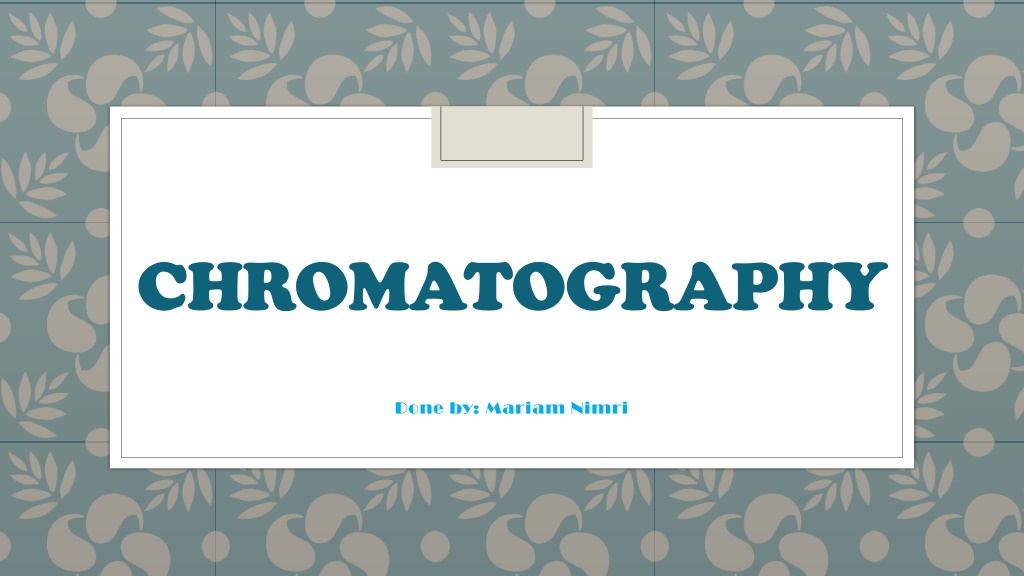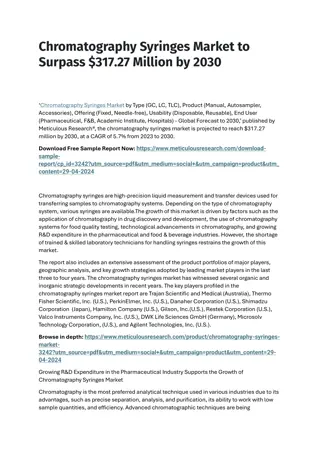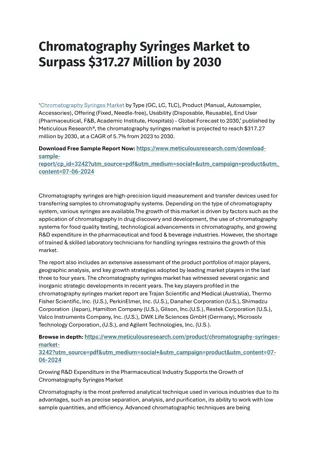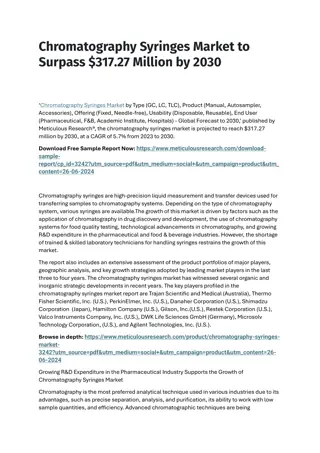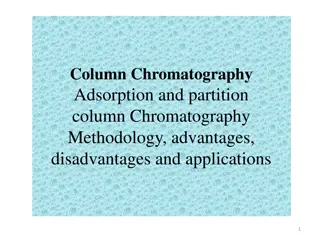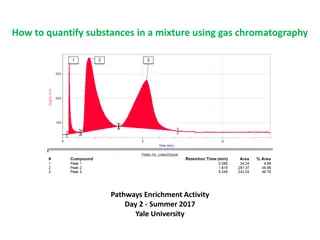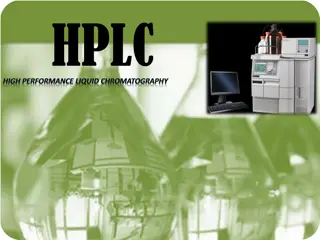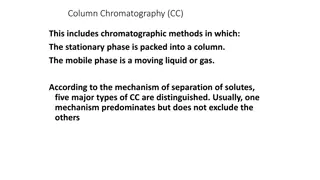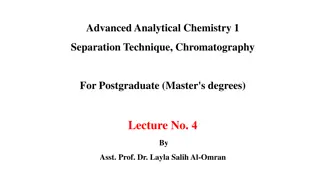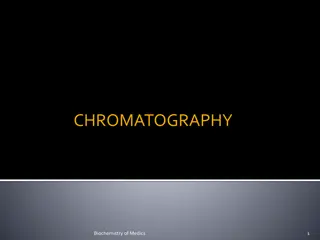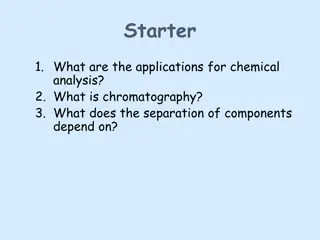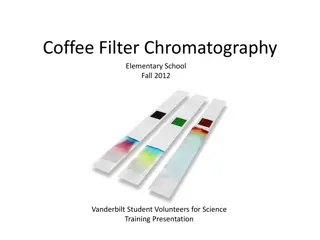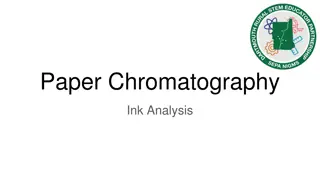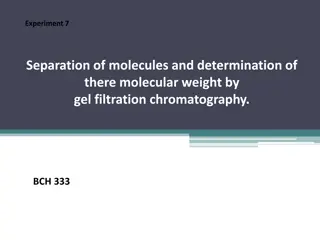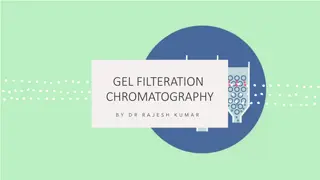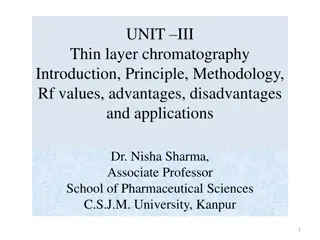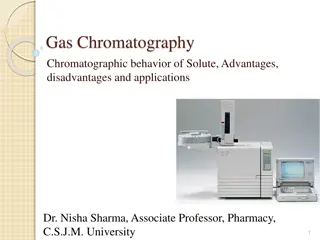Understanding Chromatography: A Practical Experiment
Chromatography is a process used to separate components of a mixture by employing a mobile phase that carries the mixture through a stationary phase. This experiment by Mariam Nimri explores the effects of different solvents on chromatography results, with a hypothesis that vinegar can impact pigment separation. The method involves using paper towel strips, glass cups, markers, and various solvents like water, rubbing alcohol, and vinegar. Safety precautions are also highlighted to ensure proper handling of chemicals.
Download Presentation

Please find below an Image/Link to download the presentation.
The content on the website is provided AS IS for your information and personal use only. It may not be sold, licensed, or shared on other websites without obtaining consent from the author. Download presentation by click this link. If you encounter any issues during the download, it is possible that the publisher has removed the file from their server.
E N D
Presentation Transcript
CHROMATOGRAPHY Done by: Mariam Nimri
what is chromatography? Chromatography is a process for separating components of a mixture. To get the process started, the mixture is dissolved in a substance called the mobile phase, which carries it through a second substance called the stationary phase What is chromatography is used for? Chromatography can be used as an analytical tool, feeding its output into a detector that reads the contents of the mixture. It can also be used as a purification tool, separating the components of a mixture for use in other experiments or procedures.
How does changing the solvent affect chromatography? f the solvent used in chromatography is highly polar in nature then we cannot separate the mixture of components into individual components. -If the solvent used in chromatography is non-polar then also we cannot separate the mixture of components into individual components. What is your hypothesis? My hypothesis is that the vinegar with make the pigment go further
Manipulating the variables Controlled Variable How will you keep this controlled? How could it affect your results if not controlled? Solvent volume By using a measuring cylinder It will effect the RF value
Materials and Method: paper towel strips glass cups Pencil Ruler (it has cm and inch) Sharpie Water +Rubbing alcohol +vinegar
Method: Cut paper towel/ coffee filters in strips. Draw a pencil line across the width of each paper strip, about one centimeter from the bottom end. Take the marker and a paper strip and draw a short line (about one centimeter) on the middle section of the pencil line. Your marker line should not touch the sides of your strip. Repeat step 3 for all the markers. Use a pencil to write the color of the marker you just used on the top end of the strip Fill cups with a bit of the solvent you are testing out: START WITH WATER. add water to the glass until the level just reaches the bottom end of the paper strip. Hang the paper strip over the edge of the glass so that the paper towel/ coffee filter touches the liquid, but the line is above the liquid. Watch as the water rises up the strips. Record your observation. (What happens to the colored lines on the strips? Does the color run up as well? Do you see any color separation? Repeat steps 1-9 using another solvent (rubbing alcohol + vinegar)
Safety precautions Don t use rubbing alcohol/ nail polish remover near flames. Wash hands after using any chemical.
Results solvent color 1 Colors appeared& distance travelled by each color/ cm color 2 Colors appeared & distance travelled by each color/cm color 3 Colors appeared& distance travelled by each color/cm water purple 2.1 red 3 black 0 Rubbing alcohol purple 6 red 5.7 black 6 purple 5 red 3 black 2 vinegar
My result Rubbing alcohol water vinegar
